Ragnar Sunnqvist – Husqvarna Road Racer
By Kenneth Olausson
He had an extraordinary talent and a rocketing career during Husqvarna’s ‘big time’ road racing era in the 1930s. Great wins on the famous Saxtorp circuit were part of his success. But Ragnar Sunnqvist’s biggest victory came in 1935 when he beat all the local German and international stars at Avus in Berlin.
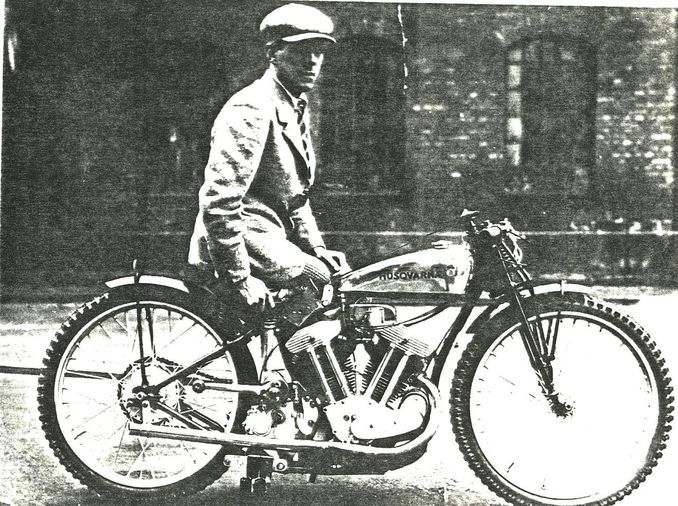
Husqvarna’s lightweight engines made their debut in road racing – then called TT for Tourist Trophy – during the 1932 season. It was the same year that a 23-year-old youngster by the name of Sunnqvist was tied to the Swedish armory factory in Huskvarna. Ragnar became teammate of the all out star Gunnar Kalén and the pair had the best chances in the world of becoming super famous on the track, taking trophies wherever they raced.
Ragnar, nicknamed Ragge in Sweden, was a man of calibre, which he proved in his first big race at the Djurgårdsloppet in Helsinki, Finland. Ragnar Sunnqvist won the 350cc class in grand style and had the second fastest lap time of the day, also counting the 500cc class. Actually, Ragge was second quickest after his team-colleague Gunnar Kalén, also riding for Husqvarna. A new hero had been established!
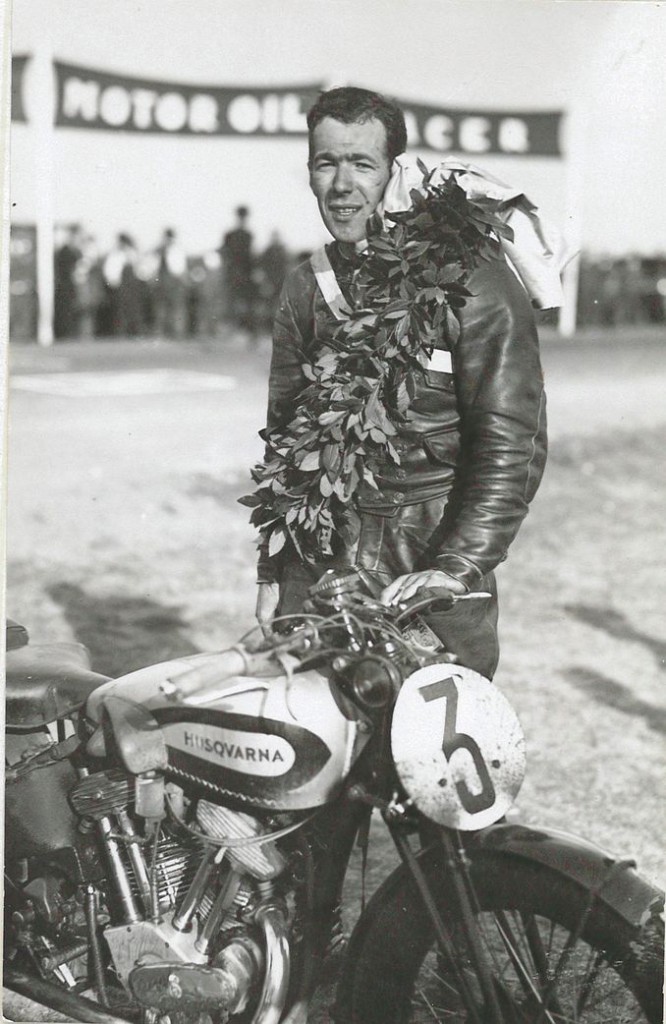
Ragnar Sunnqvist was born on the 11th of August, 1908. At the age of 16 he grabbed hold of his parents chequebook and when they were away from home happily, and without regrets, went to the post office. He took out money, stepped on the nearest train to Stockholm, and bought his first motorcycle. It was a 125cc Evans. Later, when he had his riding license, he exchanged this bike for a 350 Royal Enfield. Simultaneously Ragnar started to work as a mechanic in a two-wheel shop, where he picked up enough skill to be able to work on his own machine successfully.
Ragnar Sunnqvist won his very first race, which consisted of an enduro event in the outskirts of Stockholm. This victory was enough to engage the youngster in more serious racing. Ragnar made his TT-debut back in 1930 on a Norton. It was the Rasbo speed-race event outside of Uppsala. This was clearly the right tune for the 20-year-old who now knew where to concentrate for the future… Ragnar Sunnqvist was an unorthodox man ‘who never set example by being a choir guy’ according to a well-informed journalist of the time.
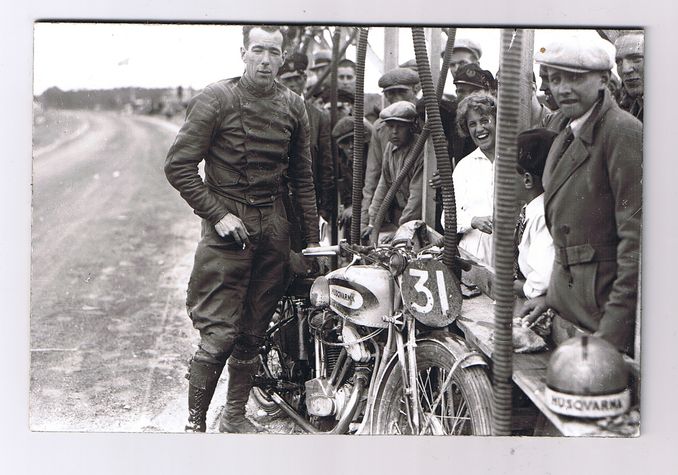
He loved to have a drink, smoke cigarettes and make jokes. In his heydays during the ‘30s he used to ride a few laps after the victory banquet before coming back to the hotel and keeping the party rolling until the early hours of the morning. Sometimes he would be miserable one moment, only to show a roaring laughter in the next seconds. Motoring journalists were reluctant to interview Ragnar as he would make jokes and sometimes tell a next-to-the-truth story, which then appeared in the news without anyone knowing what was correct or not …
His temper was the same on the track. He would often be carried away and seldom considered the consequences of his win or bust approach. To experiment and take risks were the domains of mister Sunnqvist. If there was something new to be tried out, Ragnar would be the first man testing these novel solutions. Without exaggerating one could say that this Swede was the great daredevil of his time, mostly resulting in deeds that other riders did not even think of achieving. If nothing else, this was proved by the fact that Ragnar Sunnqvist was never severely hurt during his entire career.
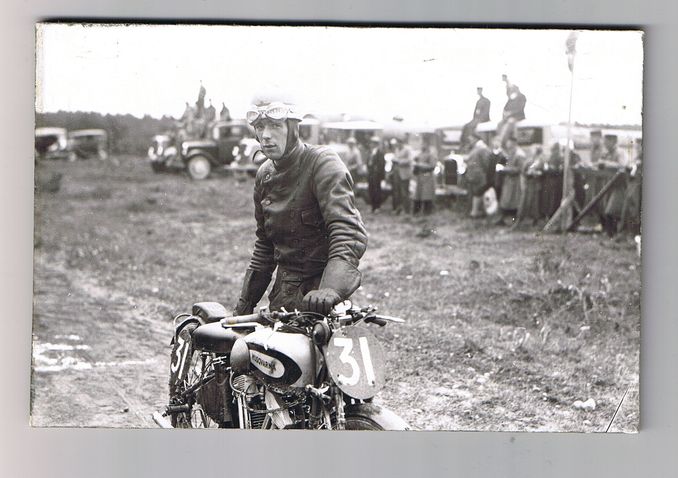
In the Swedish Grand Prix at Saxtorp in 1932 Ragnar Sunnqvist proved to the world to be a worthy team member in the greatest team of this era. He rode his Husky-banana (so called by the British) after the bike had been upgraded, now weighing 22 kilos less than the factory’s previous racing model.
Since Gunnar Kalén was the team leader he had of course access to this fabulous new machine. But during practice there were some mechanical problems with the new engine. Gunnar Kalén did not trust the words of his team manager Folke Mannerstedt and so preferred to ride the older, heavier bike. This left Sunnqvist to try the newcomer and he wasn’t slow to prove the engineer’s point and enjoyed a successful race. He won the 500cc class comfortably by racing the 30 laps in a time of three hours 24 minute, 35.1 seconds. This was a new record with an average speed of 128 km/h. Ragnar beat Kalén who came home second in this important race where all the foreign riders were beaten fair and square.
The main event in 1933 was again Saxtorp, now having earned the title ‘Grand Prix of Europe’. The very best international riders had travelled to southern Sweden in order to compete. And the crowd was the biggest ever attending a Swedish motorcycle race.
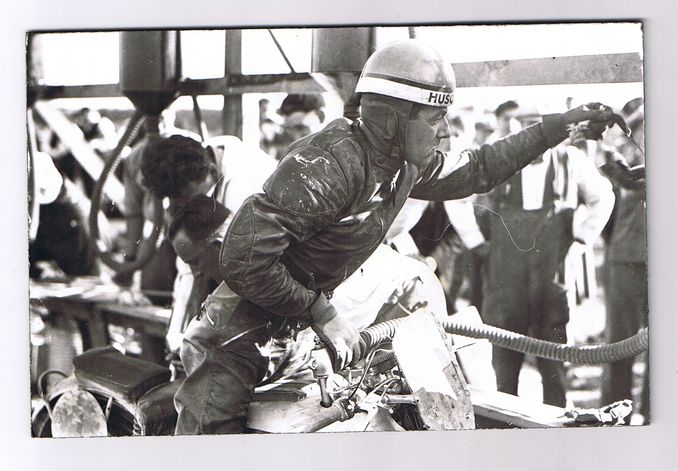
150,000 people turned up during the race days at the beginning of September. Both Kalén and Sunnqvist were given favourites in the Husqvarna-team and would race idols like Stanley Woods and Tim Hunt, who both rode for the Norton team. Sunnqvist was well ahead after the start while Kalén was forced to stop, changing spark plugs after only a few kilometres. After one lap Sunnqvist lay second but fell back to third when two laps were completed. Then his clutch started to slip and the Swede had to slow down a little in order to make his way around the circuit. After that both his first and third gears disappeared and Sunnqvist had to slow down even more, though he never give up.
Stopping was never a becoming style for Ragge Sunnqvist. After 13 laps the two British Norton riders stopped for fuel and Sunnqvist moved ahead with a 10-second lead. On the next lap Tim Hunt had a shunt and disappeared. Then Sunnqvist had to pick up fuel and lost two minutes in the paddock. After 20 laps Wood’s motor burst and now Sunnqvist was well away to his next victory with only 10 laps to go. Kalén was in the runner-up position but was six minutes behind the leader at this time. Then disaster struck for Sunnqvist as he lost his chain. Although managing to put it back on he was without the strength needed to run his machine uphill to get it started again. Ragnar broke down and had to witness his teammate Kalén taking another important win in their battle. It was the biggest disappointment of his whole career.
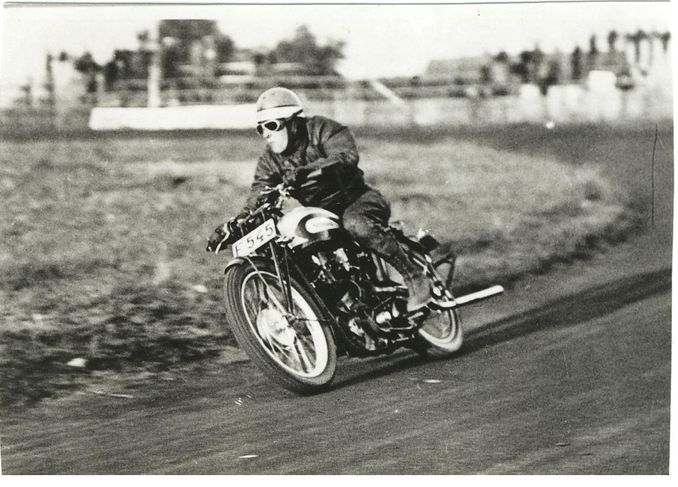
The German GP in Hohenstein-Ernsthal near Chemnitz had a dangerous track and Ragge had a crash during practice when he hit oil on the tarmac. He had to visit the hospital and the doctor insisted he would race at his own risk, or better still sit this round out. Not an option for Sunnqvist, of course. Ragnar took an early lead but was passed both by Kalén and the Brit Walter Rusk. Then Kalén had a serious accident and lost his life, which made race conditions sour for Sunnqvist. But he kept on only to find out that his clutch broke 150 meters ahead of the finish line. Ragnar ran to the chequered flag and secured the modest prize money for him and his team. He passed out after reaching the end only to find out that a mere 4 riders out of 30 starters had finished this gruelling race.
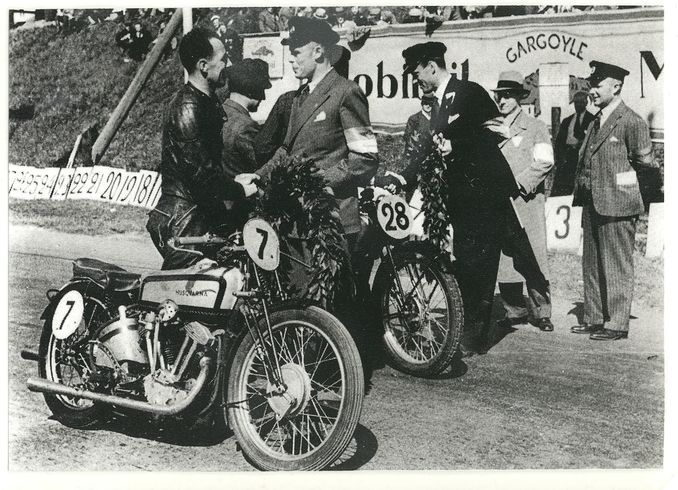
Avus in 1935 was the event of the year in Germany. Every star in the game was present at the famous Berlin track with its fantastic steep-designed, sloped curves. The bike of Sunnqvist was geared for a top speed of 200 km/h and he himself adjusted both spark plugs and set the jets appropriately. Ragnar was an expert in the field and he always got his carburettors well tuned and in perfect harmony.
A record crowd of 300,000 spectators came to witness this important clash of riders on a track that was unforgiving and demanded super efforts from each and every racer. 46 riders took to the start and went towards the initial hurdle at the North curve (Nordkurve). After one completed lap the German Karl Gall on his BMW lead ahead of Swede Ragge. In the well-sloped North curve Ragnar Sunnqvist showed more guts than his German opponent and took over the lead after the two riders had passed this obstacle on the next lap.
They were now making an average speed of 170 km/h – in 1935! As Gall had the quicker machine he was able to overtake Sunnqvist again on the long straightaway. This cat and mouse dance went on during the entire race – until the very last lap. Gall knew he had to outrace Sunnqvist in the final and went through the North curve at too fast, which resulted in a frightening wobble and almost a crash. But the two riders were side by side over the finish line – with Sunnqvist a fraction ahead! After an average of 171,6 km/h Ragge Sunnqvist was awarded the big laurel from a surprised Korpsführer Hühnlein representing Nazi-Germany. Evidently no one had counted on a Swedish victory as it took a very long time before the Swedish anthem record was found and played in front of a disappointed crowd, who’d also counted on a German win.
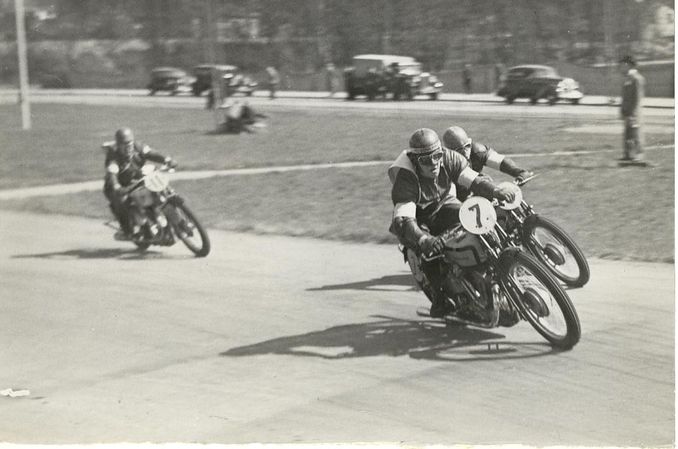
1936 became the last Husqvarna season for Ragnar Sunnqvist. He was no longer employed by the factory who had stopped racing in the TT field. Now the team was renamed “Scuderia Husqvarna” and Sunnqvist won Grand Prix races in Finland, France and in Switzerland as well as taking a silver replica in the TT on the Isle of Man. A 10-year career took its toll on Sunnqvist who had been successful on tarmac, ice racing, grass tracks, in hill climbs, on a scramble machine (motocross) and in different enduro races.























